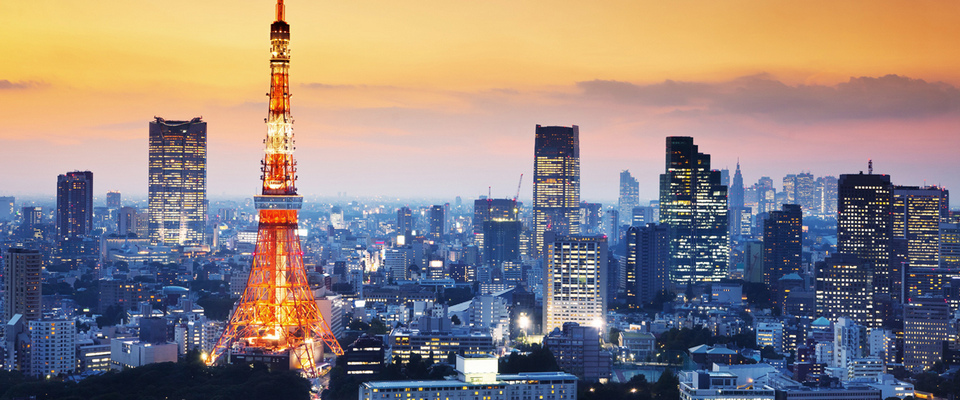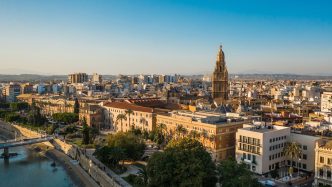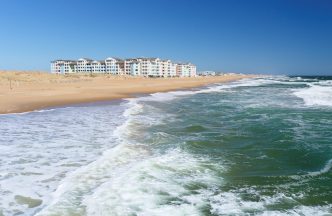The First-Timer’s Tokyo Travel Guide (2023)
Tokyo is one of the most exciting cities not just in Japan family travel blog, but in the world. It is an absolutely massive metropolis with a never-ending list of fun and interesting things to do.
Writing a travel guide to Tokyo is something I’ve been wanting to do for some time now. I’ve been putting it off because of how daunting a task I knew it would be.
With so many things to see, to do, to eat, and to experience in Tokyo, I wanted to write a Tokyo travel guide that would do this incredible city justice, something that would make any first-time visitor’s stay as memorable and as fun-filled as possible.
If it’s your first time visiting Japan’s capital, then I hope this travel guide helps you make the most of your time in Tokyo.
TOKYO TRAVEL RESTRICTIONS
Because of the current global situation, Tokyo travel guidelines have been changing on a regular basis. Our friends at Booking.com and airheart created websites that list detailed information on travel restrictions around the globe.
Before planning a trip to Tokyo, be sure to check Booking.com or airheart for information on travel restrictions to Japan. If you do decide to visit Tokyo, then you may want to seriously consider getting travel insurance with COVID coverage.
JAPAN VISA
You may need a visa and other requirements to travel to Spain depending on your passport. Visit iVisa.com to learn about the requirements and to apply for a visa (if necessary).
If you’re a Philippine passport holder living in Manila, then check out our guide on how to apply for a Japan tourist visa for a step-by-step process.
TOKYO TRIP PLANNING
Tokyo is one of the hardest cities to plan a trip for, simply because there’s so much to do! Planning a trip to Tokyo can be daunting so you may want to have a destination expert create a Tokyo itinerary just for you.
ViaHero is a travel planning service that puts you in contact with destination experts so they can create a custom itinerary for you based on your preferences. They have destination experts in different cities around the world, including Tokyo. If you’d like to try them out, then you can get a 5% discount on their services if you enter WILLFLYFORFOOD upon checkout using our link.
TOKYO AT A GLANCE
Tokyo is the capital of Japan. It’s the world’s largest city with an urban population of over 38.5 million people. It’s one of Japan’s 47 prefectures and is part of the Kanto region on the southeastern side of Honshu, Japan’s main island.
Tokyo started off as a humble fishing village called Edo before becoming a prominent political center and castle town in the 17th century. In 1868, Empreror Meiji moved the imperial seat from Kyoto to Edo, renaming the city Tokyo meaning “Eastern Capital”.
Today, Tokyo is a major financial, technological, and cultural hub. It’s a global leader in the arts, media, fashion, and entertainment industries.
It has many excellent museums, temples, and gardens, and its extensive rail system makes day trips to neighboring prefectures a possibility.
But perhaps best of all, is its food.
Known for its many delicious dishes like sushi, ramen, and monjayaki, Tokyo is the world’s standard bearer for gastronomy, boasting over twice as many Michelin Stars as its closest rival Paris.
In fact, some people claim that the world’s best pizza isn’t in Italy, but here in Tokyo.
BEST TIME TO VISIT TOKYO
You may come across articles claiming that Tokyo is a year-round destination. While that may be true, some months are definitely better than others.
Spring and Fall are typically the best times to visit Tokyo. The weather is ideal and it gives you the opportunity to experience the cherry blossoms in spring and the colorful foliage of fall.
SEPT-NOV: Autumn is generally one of the most beautiful times of the year to visit Japan. Personally, it’s my favorite. I love the colors of fall and the weather is perfect. Leaves start turning color at the end of October so the optimal time to see the fall colors is in November. You can enjoy them at Tokyo’s parks like Koishikawa Korakuen but they’re best appreciated on day trips to less urban areas like Hakone or Kamakura.
DEC-FEB: Winter isn’t the best time to visit Tokyo but I wouldn’t necessarily call it bad either. I was there in January and February on my last trip and while it did get cold on some days, it wasn’t unbearable. If you want to go skiing or snowboarding in Japan, then winter is obviously the best time to go. There are a few ski resorts you can visit on a day trip from Tokyo, but serious skiers may want to continue north to Sapporo in Hokkaido, home of the best powder in Japan.
MAR-MAY: Spring, like autumn, is one of the best times to visit Japan. The weather is ideal and flowers are in bloom. If you’re visiting Tokyo for the cherry blossoms, then early to mid-April is when you should go. Just know that this is high season and one of the busiest times to visit Japan. Plan your trip well in advance. Weather-wise, May is great too but Golden Week is peak season for domestic travel in Japan.
JUN-AUG: Summer is high season in Japan and among its hottest and rainiest months. It’ll be warmer, more humid, and more crowded, and perhaps not the most comfortable time to go.
Climate: Annual Monthly Weather in Tokyo
For more on Tokyo’s weather, check out these climate graphs from holiday-weather.com. I’ve also created average temperature and annual rainfall graphs with the most ideal months to visit marked in orange.
TRAVELING TO TOKYO
Tokyo’s Haneda Airport (HND) and Narita International Airport (NRT) are the busiest airports in Japan. While some international flights do go through Haneda, it’s primarily a domestic airport so the majority of international travelers will be arriving via Narita.
You’ll need to arrange for transfers to your hotel from either Narita or Haneda airports. Narita is about 65 km east of central Tokyo while Haneda is about 17 km south.
By metro is generally our preferred means of airport transfer because it’s cheap, efficient, and often the fastest, but listed below are the different ways you can get to your hotel from either airport.
FROM NARITA INTERNATIONAL AIRPORT (NRT)
BY METRO
Narita terminals 1 and 2 have metro stations in their respective basements. If you arrive at Terminal 3, then you can walk to Terminal 2 or catch a free shuttle bus between terminals to ride the metro.
JR NARITA EXPRESS: This is the fastest way to get to Tokyo Station from Narita. It’s a direct train that takes about an hour and costs JPY 3,070. From Tokyo Station, you can then take a connecting train to your hotel. The JR Narita Express is fully covered by the JR Pass so if you’re planning on getting one, then this will be one of your best options. You can purchase a JR Pass through Klook or Japan Rail Pass.
JR SOBU LINE: The JR Sobu Line (Rapid) is slower but much cheaper than the JR Narita Express. It takes about 90 minutes to get to Tokyo Station and costs JPY 1,320.
KEISEI SKYLINER: The Keisei Skyliner will get you to Nippori Station in about 40 minutes. From there, you can catch a connecting train to your hotel. The Keisei Skyliner typically costs JPY 2,470 but you can get it for just JPY 2,300 if you purchase it in advance through Klook. You can also get it bundled with a Tokyo Subway Ticket. I’ll talk more about the Tokyo Subway Ticket in the HOW TO GET AROUND section of this guide.
KEISEI LIMITED EXPRESS: This is the slower but much cheaper alternative to the Keisei Skyliner. It can get you to Nippori Station in about 75 minutes and costs JPY 1,200.
BY BUS
LIMOUSINE BUS: You can catch a direct limousine bus to Tokyo Station or to several major hotels in central Tokyo for JPY 3,100. To check if your hotel is part of the serviced route, you can click on the link for a list of service areas. You can book limousine bus tickets in advance through Klook.
DISCOUNT BUS: You can take the “Airport Bus TYO-NRT” from Narita Airport to either Tokyo Station or Ginza Station. The trip takes about 90 minutes and costs JPY 1,300 during normal hours and JPY 2,600 during off-hours.
BY CAR
PRIVATE/SHARED TRANSFER: This is the most convenient way of getting to your hotel from Narita Airport but it’s also one of the most expensive. Klook and Get Your Guide offer airport transfers from Narita to your hotel in downtown Tokyo.
TAXI: This will be the most expensive option. It’ll cost you about JPY 30,000 to get to your hotel in central Tokyo.
FROM HANEDA AIRPORT (HND)
BY METRO
TOKYO MONORAIL: You can take the Tokyo Monorail from Haneda Airport to Hamamatsucho Station. The journey takes about 20 minutes and the fare is JPY 500. From there, you can catch a connecting train to your hotel.
KEIKYU RAILWAYS: Take the Keikyu Airport Line to Shinagawa Station. The trip takes about 20 minutes and costs JPY 300. You can then catch a connecting train to your hotel.
BY BUS (not currently available)
LIMOUSINE BUS: The same limousine bus that services Narita also services Haneda. You can check this list to see if your hotel is serviced by this route. Limousine bus transfers from Haneda cost JPY 1,250 and you can purchase tickets in advance through Klook.
BY CAR
PRIVATE/SHARED TRANSFER: Klook and Get Your Guide offer airport transfers to central Tokyo from Haneda.
TAXI: A taxi ride to central Tokyo will cost you anywhere between JPY 5,000-11,000, depending on the destination and time of day.
FROM OTHER PARTS OF JAPAN
If you’re arriving in Japan via a different city (ie Osaka, Fukuoka, Nagoya, etc), then one of the best ways to get to Tokyo is by train. Japan is very much a train society with an extensive and highly efficient railway system. family travel blog You can do a search on Hyperdia to find the different ways you can get to Tokyo by train from wherever you are in Japan.
It’s accurate and very reliable. family travel blog If you plan on doing a lot of intercity travel in Japan, then a JR Pass may be a good investment. It’ll give you unlimited travel on JR trains for the duration of your pass. Visit Klook or Japan Rail Pass for more information and to purchase a JR Pass.
WHERE TO EXCHANGE CURRENCY
The unit of currency in Japan is the Japanese Yen (JPY).
BANKS / POST OFFICES: Banks and post offices are among the most reliable places to exchange foreign currency in Japan. However, they aren’t the fastest. I’ve exchanged currency at a few banks and there’s always some paperwork involved so the process may take some time (around 15-30 minutes). family travel blog family travel blog
LICENSED MONEY CHANGERS: I’ve never exchanged currency at a licensed money changer in Japan, but I read that they’re reliable and rates are competitive. You can refer to this guide for a list of recommended money changers in Tokyo. family travel blog
KINKEN SHOPS: Kinken shops are small stores that buy and sell unused event tickets. Some of them also exchange currency. I bought discounted DisneySea tickets and exchanged currency at this kinken shop in Shinjuku. I got good rates and didn’t have any problems but I’ve read that the the biggest and perhaps most reliable kinken shop chain in Tokyo is Daikokuya.






